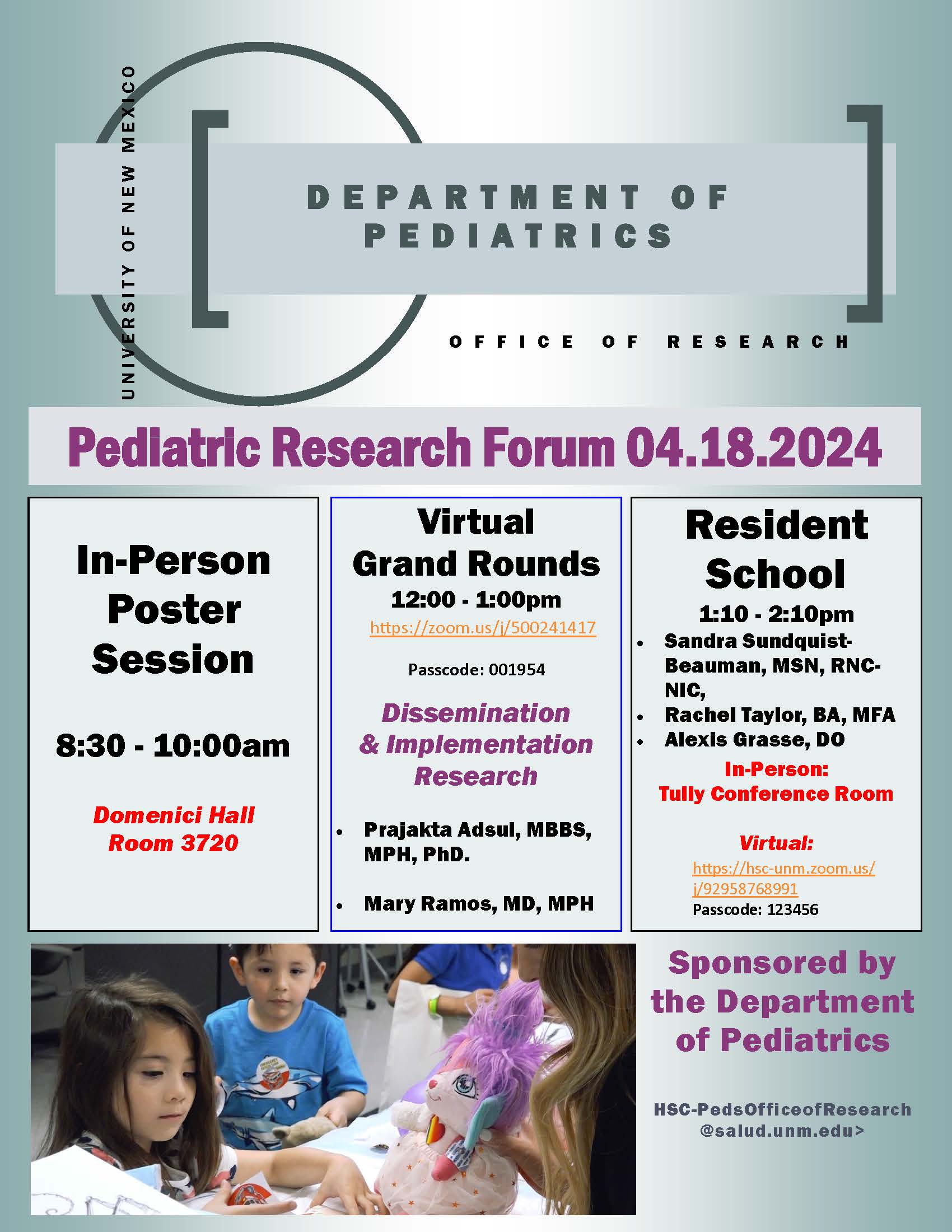Document Type
Poster
Publication Date
4-18-2024
Abstract
Background During Pediatric Well Child Checks (WCCs) there are many safety anticipatory guidance topics that should be discussed (water, choking, falls, car seats, guns, sun protection, etc) (1, 2). The current busy outpatient clinic is a challenging environment to discuss all of these important topics, which also creates a difficult environment for residents to practice giving anticipatory guidance (3). Focusing on fewer topics (4) during each WCC may allow residents to more confidently discuss these topics with families.
Methods In order to improve resident confidence, we designed quarter sheet handouts for WCCs ages 0-3 years old, primarily based on AAP recommendations from “Bright Futures” (5, 6). These handouts included child safety topics with age-appropriate safety anticipatory guidance. They provide residents a structure to discuss 10 safety topics at least twice in the first 3 years of routine WCCs. While these handouts are designed to be given to parents, their primary function in the study was to give residents structure and repetition to discuss anticipatory guidance of safety topics. Pediatric residents completed a pre-survey of their confidence in discussing safety anticipatory guidance, using a likert scale (1-5). Three months later, the residents completed a post-survey to re-assess their confidence.
Results A total of 39 pediatric residents completed the pre-survey, and 27 completed the post-survey. Resident confidence increased from a mean of 2.90 to a mean of 3.37 on the likert scale, after using the handouts for three months. This improvement in confidence is statistically significant with a p-value of 0.016.
Conclusion Providing structured handouts for residents to discuss anticipatory safety guidance topics can improve resident confidence. The ultimate goal of improving resident confidence in discussing safety topics is to educate future physicians to further prevent serious pediatric injuries.
1 Schuster, M. A., Duan, N., Regalado, M., & Klein, D. J. (2000). Anticipatory Guidance: What Information Do Parents Receive? What Information Do They Want? Archives of Pediatrics Adolescent Medicine, 154(12), 1191. https://doi.org/10.1001/archpedi.154.12.1191
2 Wurster Ovalle, V. M., Pomerantz, W. J., & Gittelman, M. A. (2018). Severe Unintentional Injuries to Ohio Children: What We Should Be Addressing at Well-Child Visits. Clinical Pediatrics, 57(9), 1092–1099. https://doi.org/10.1177/0009922818756350
3 Balog, E. K., Hanson, J. L., & Blaschke, G. S. (2014). Teaching the Essentials of “Well-Child Care”: Inspiring Proficiency and Passion. Pediatrics, 134(2), 206–209. https://doi.org/10.1542/peds.2014-1372
4 Barkin, S. L., Scheindlin, B., Brown, C., Ip, E., Finch, S., & Wasserman, R. C. (2005). Anticipatory Guidance Topics: Are more better? Ambulatory Pediatrics, 5(6), 372–376. https://doi.org/10.1367/a04-2131r1.1
5 American Academy of Pediatrics. (2024). Bright futures. Home. https://www.aap.org/en/practice-management/bright-futures
6 Icahn School of Medicine at Mount Sinai. (2022). Home: Sparks parent video series. Sparks Video Series. https://www.sparksvideoseries.com/
Recommended Citation
George, Alaina; Avery Tsuha; and Chandler Todd. "Improving Resident Confidence in Delivering Anticipatory Safety Guidance." (2024). https://digitalrepository.unm.edu/hsc_2024_pediatric_research/9

